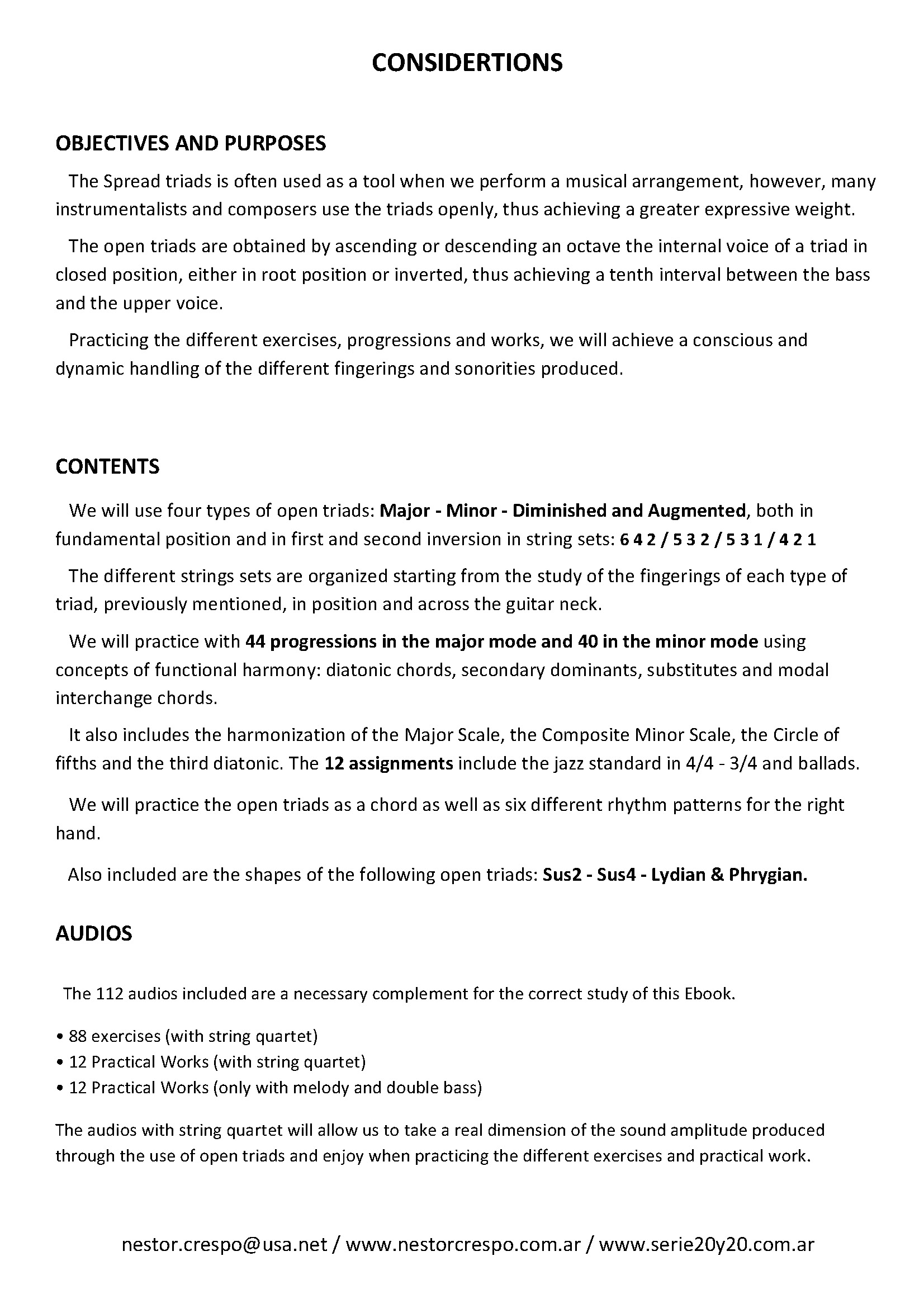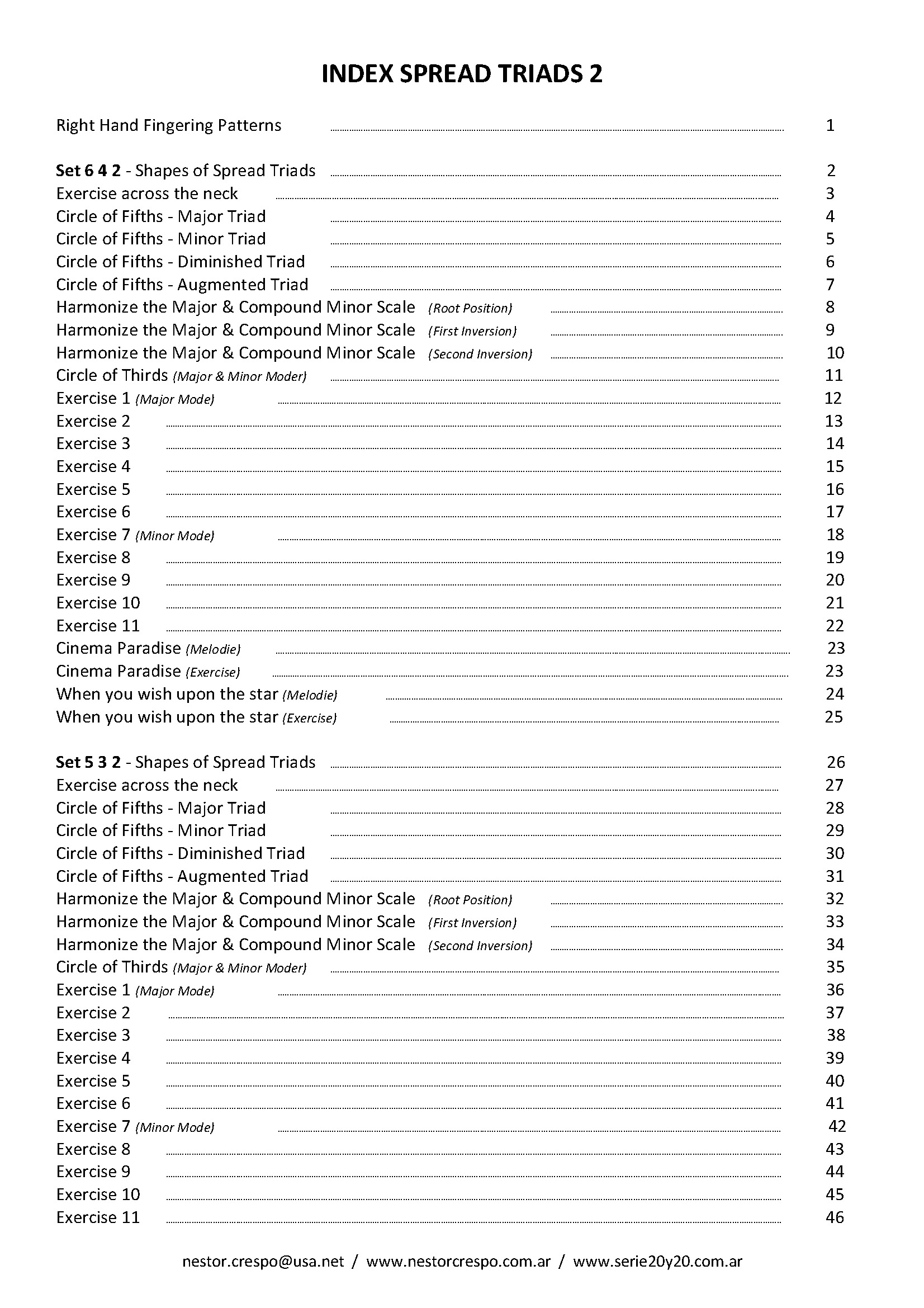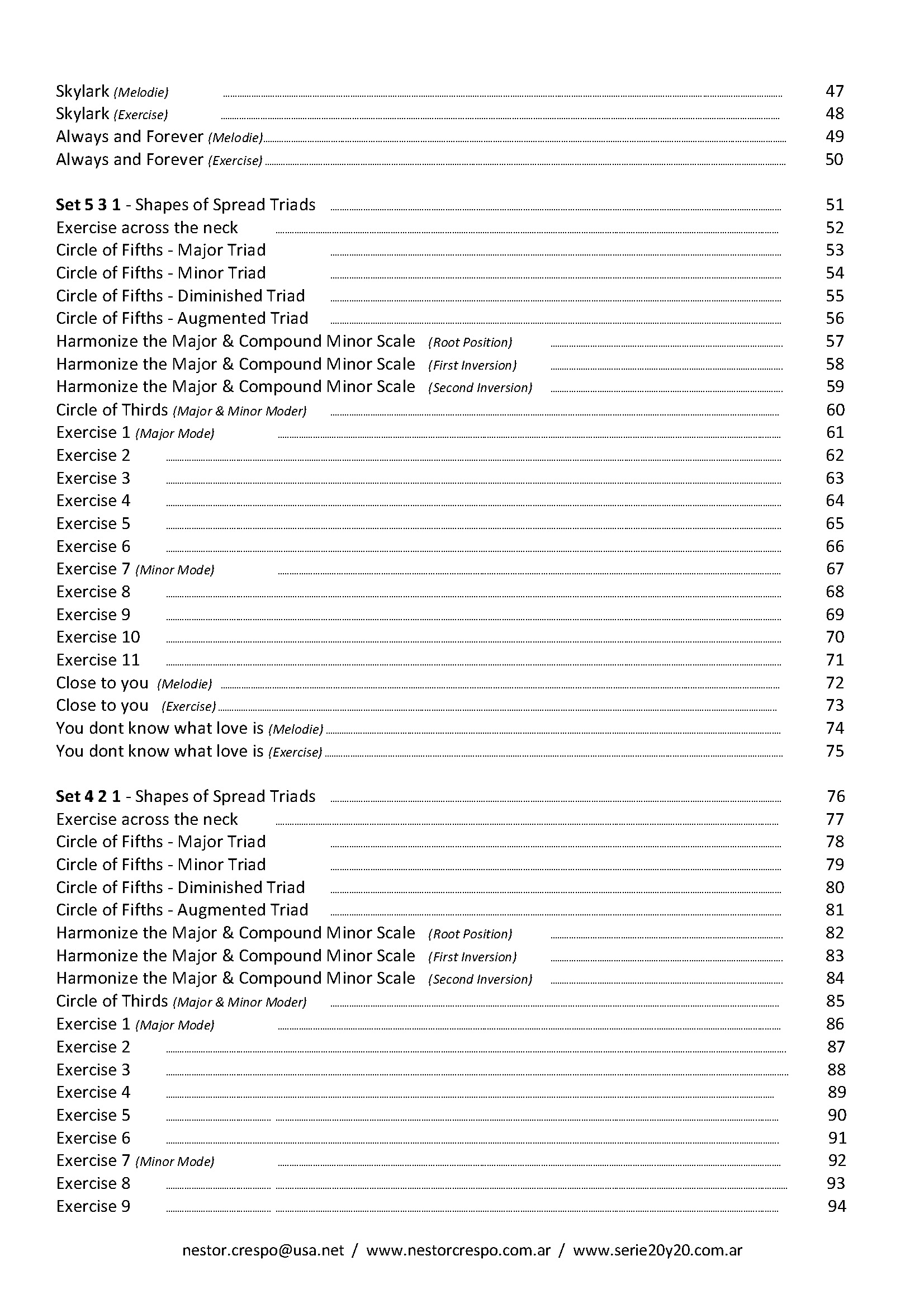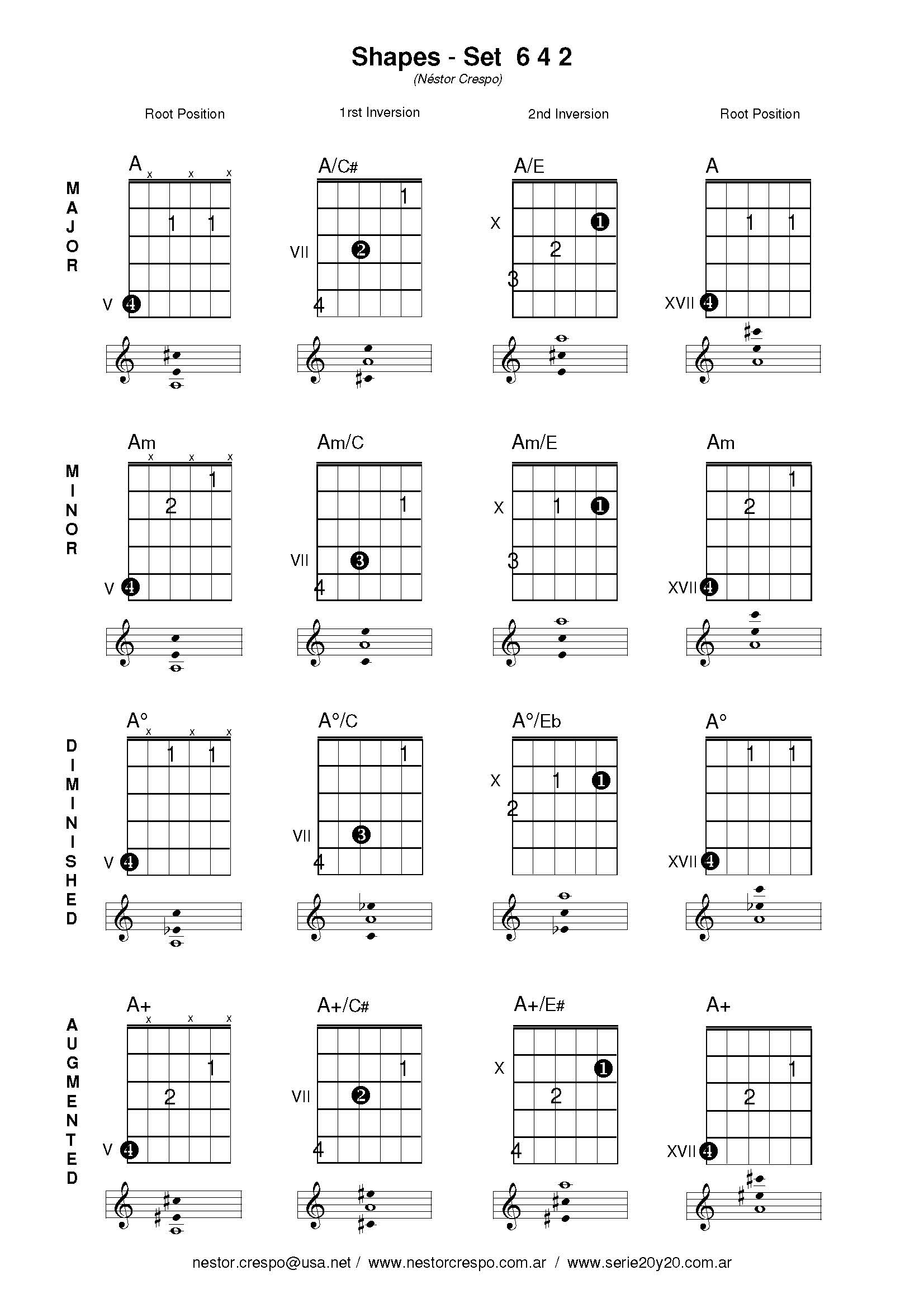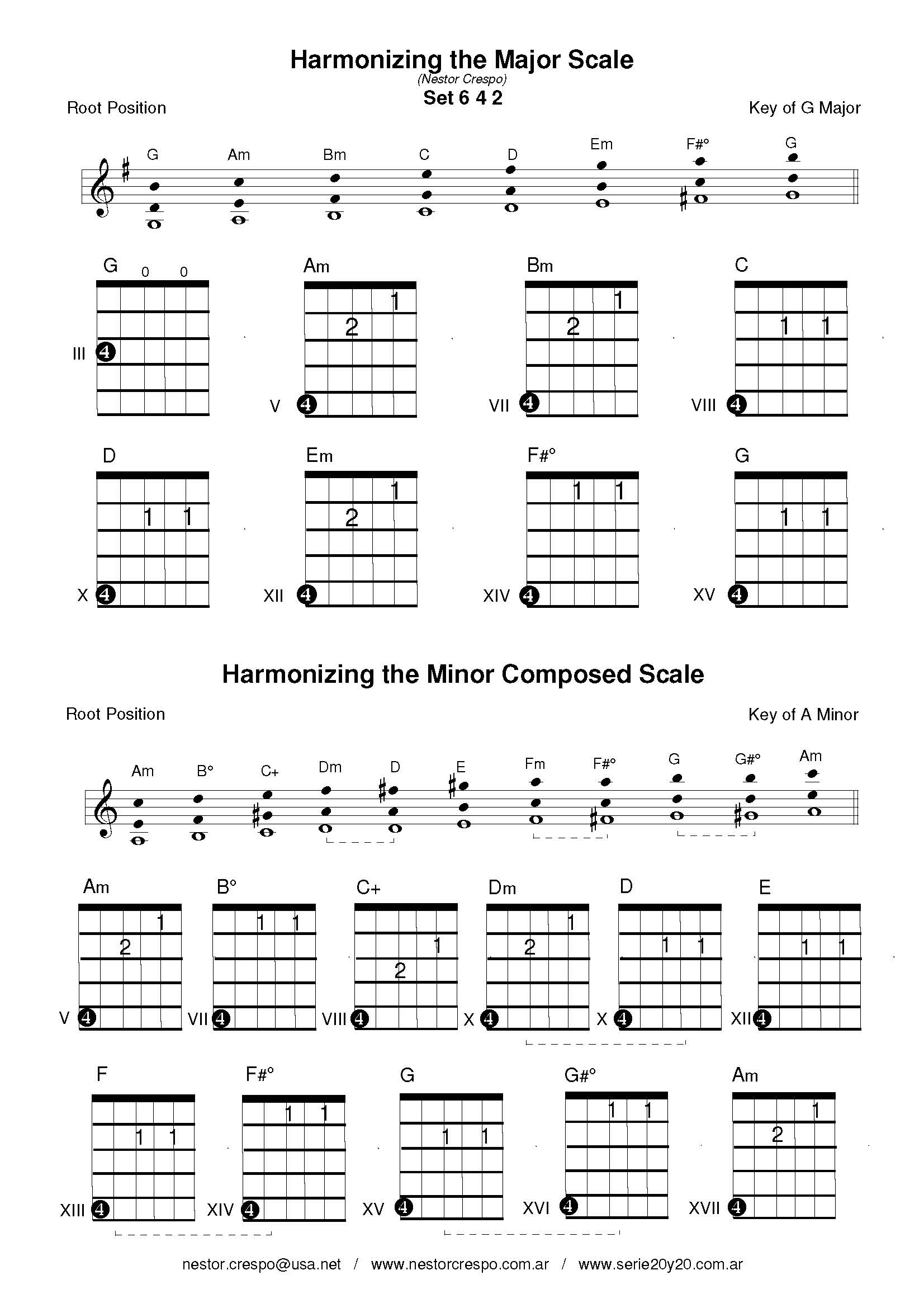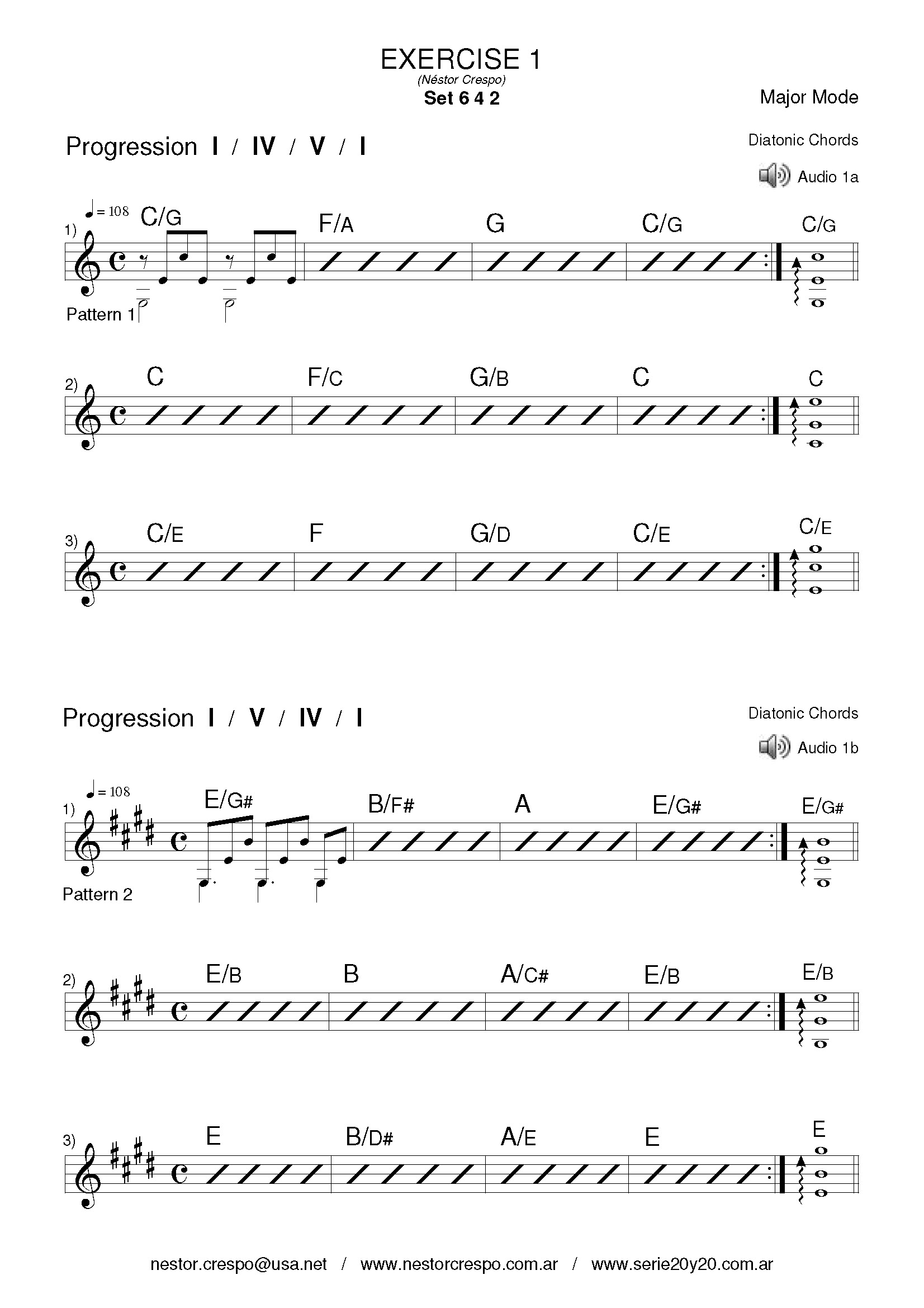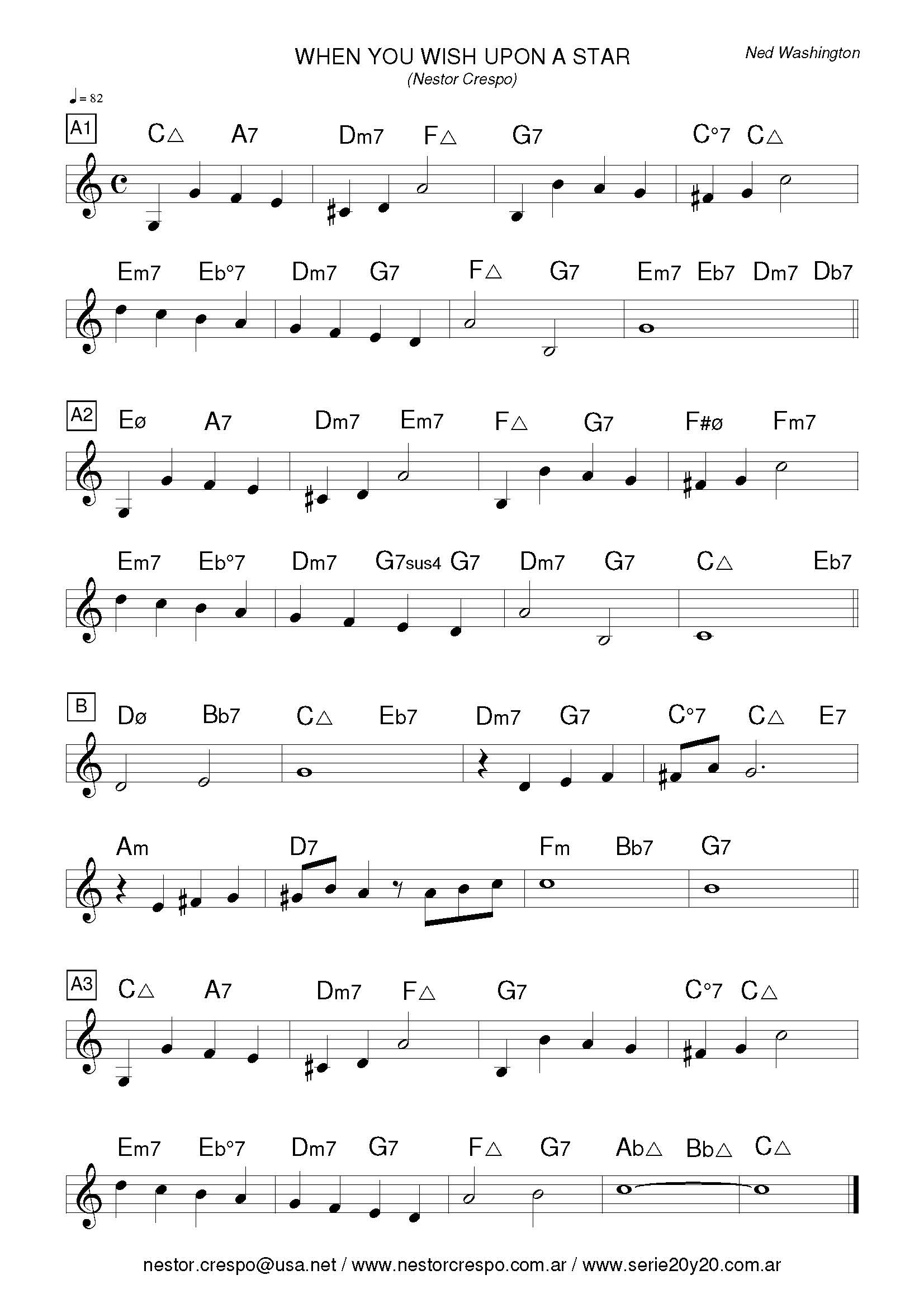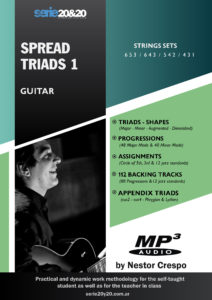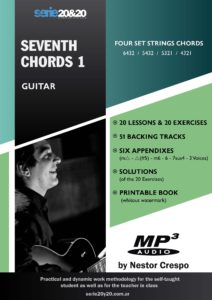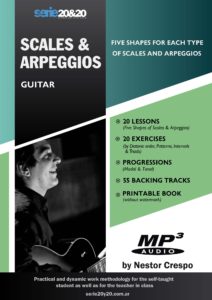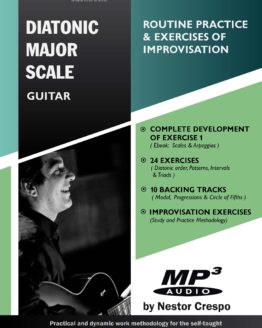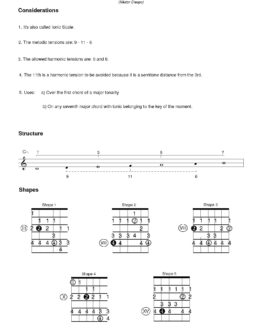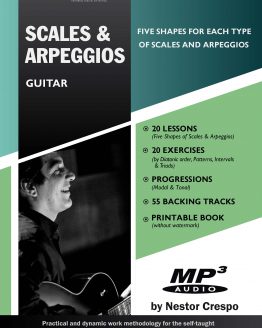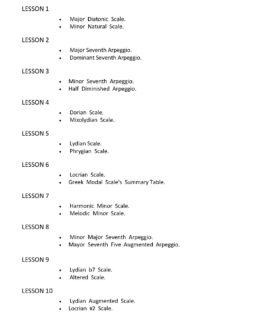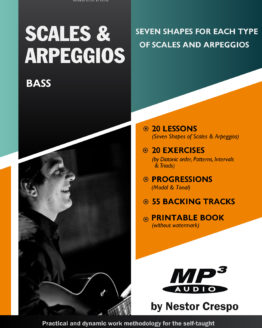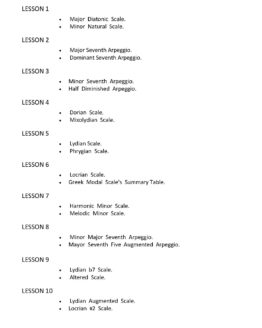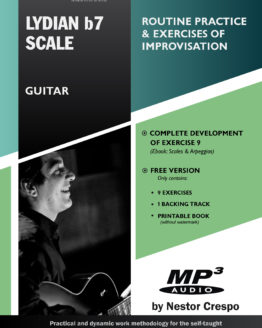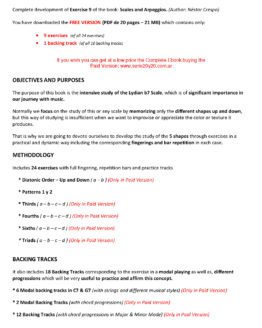Practical and dynamic work methodology for the self-taught student
as well as for the teacher in class
CONTENTS
You are buying (PDF whit 114 pages – 227MB) which contains:
* 48 Progressions (major mode) 40 Progressions (minor mode)
* 8 Assignments (Jazz standards)
* 104 Audios & Backing Tracks (Essential complement for the complete study of the developed concepts)
* 6 Audios (Right Hand Fingering Patterns)
* Appendix Triads (sus2 – sus4 – Phrygian – Lydian)
* Printable Book (without watermark)
OBJECTIVES AND PURPOSES
The closed triads is often used as a tool when we perform a musical arrangement, however, many instrumentalists and composers use the triads openly, thus achieving a greater expressive weight.
The open triads are obtained by ascending or descending an octave the internal voice of a triad in closed position, either in root position or inverted.
Practicing the different exercises, progressions and assignments, we will achieve a conscious and dynamic handling of the different fingerings and sonorities produced.
CONTENTS
We will use four types of open triads: Major – Minor – Diminished and Augmented, both in fundamental position and in first and second inversion in string sets: 6 4 2 / 5 3 2 / 5 3 1 / 4 2 1
The different strings sets are organized starting from the study of the fingerings of each type of triad, previously mentioned, in position and across the guitar neck.
We will practice with 44 progressions in the major mode and 40 in the minor mode using concepts of functional harmony: diatonic chords, secondary dominants, substitutes and modal interchange chords.
It also includes the harmonization of the Major Scale, the Composite Minor Scale, the Circle of fifths and the third diatonic.
The 8 assignments include the jazz standard in 4/4 – 3/4 and ballads.
We will practice the open triads as a chord as well as six different rhythm patterns for the right hand.
Also included are the shapes of the following open triads: Sus2 – Sus4 – Lydian & Phrygian.
AUDIOS
The 104 audios included are a necessary complement for the correct study of this Ebook.
* 88 exercises (with string quartet)
* 12 backing tracks (with string quartet and also only with melody and double bass)
* 6 Audios (Right Hand Fingering Patterns)
Audios with string quartet will allow us to take a real dimension of the sound amplitude produced through the use of spread triads and enjoy when practicing the different exercises and assignments.
For more information please contact to the author: nestor.crespo@usa.net

